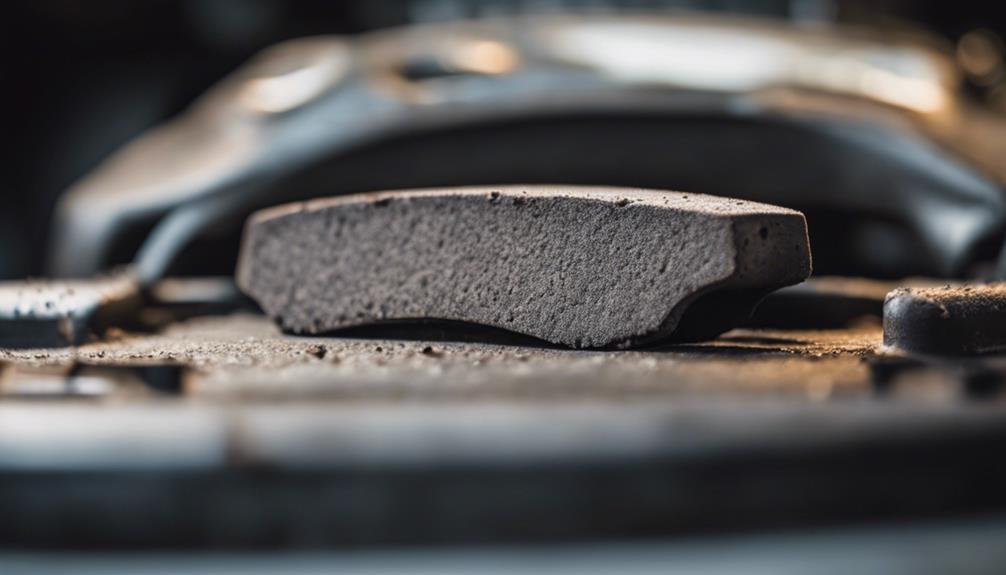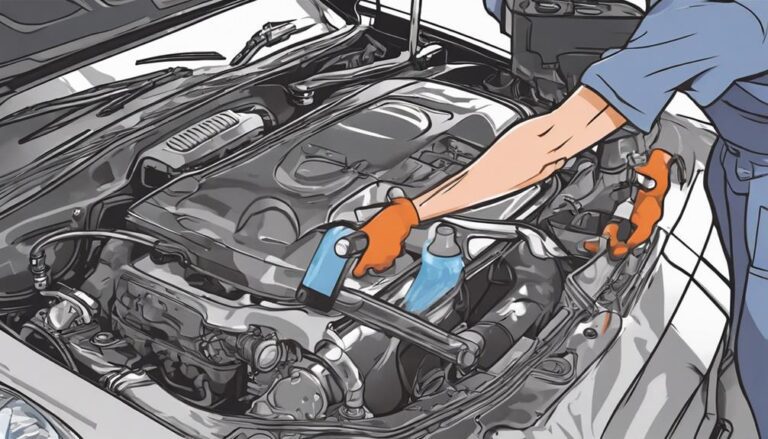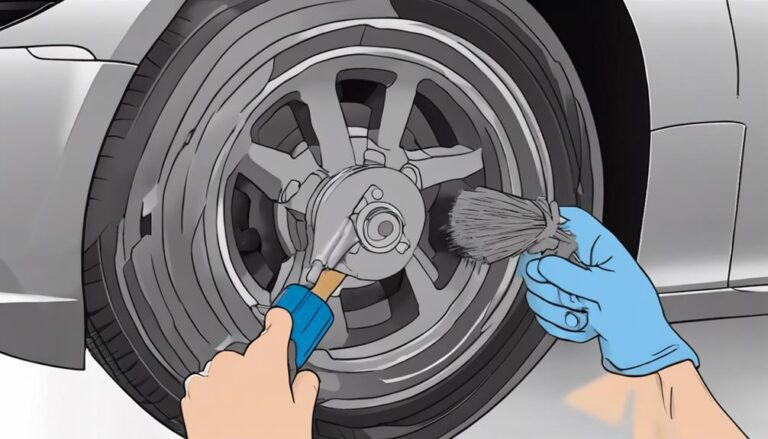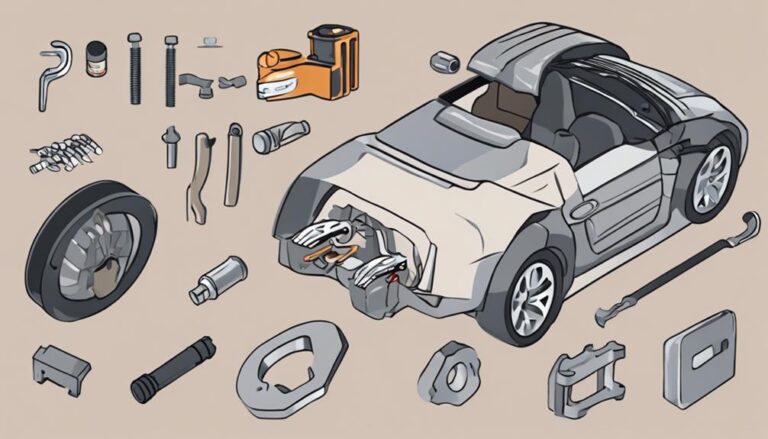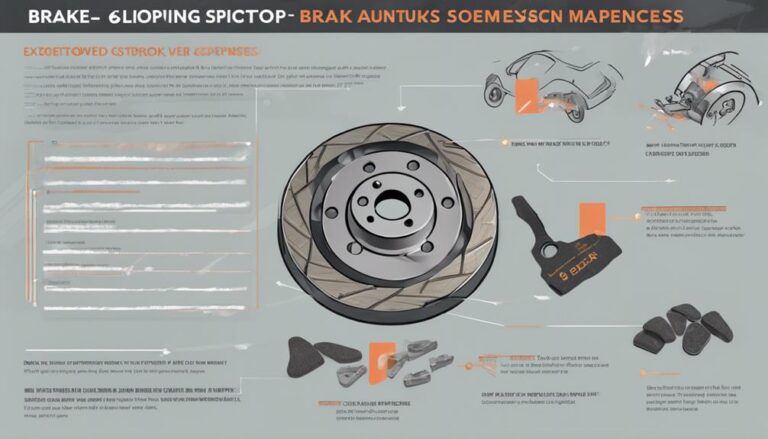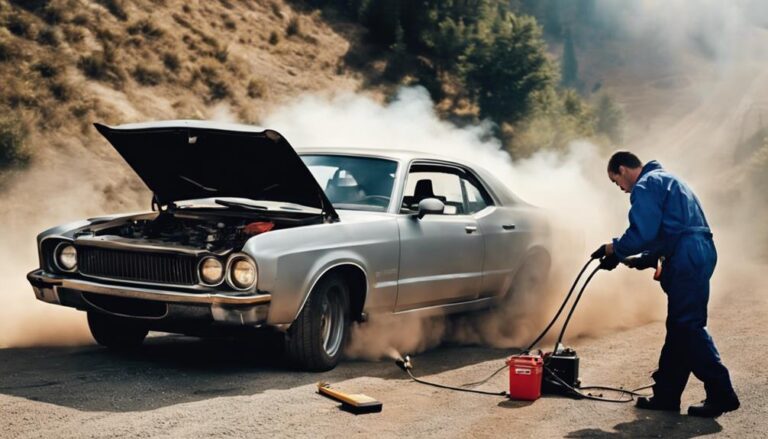What Are the Signs of Worn Brake Pads?
When it comes to your vehicle's safety, the old adage 'better safe than sorry' holds true, especially when it comes to your brake pads.
Feeling uncertain about the condition of your brake pads can be unsettling, and rightly so. The consequences of ignoring the signs of worn brake pads can be dire, affecting not just your car but your safety and that of others on the road.
Before you hit the brakes next time, wouldn't you want to know if they're at their best?
Key Takeaways
- High-pitched squealing noise indicates worn brake pads
- Increased stopping distances signal potential pad wear
- Changes in pedal pressure and feel suggest brake pad deterioration
- Prompt replacement of worn brake pads is crucial for safety and maintenance
Common Signs of Worn Brake Pads
If you hear a high-pitched squealing noise when applying the brakes, this is a common indication of worn brake pads that should be promptly inspected or replaced. Ignoring this warning sign can lead to more severe issues like grinding sounds and a rough feeling during braking, which could suggest severely worn brake pads requiring immediate attention.
Alongside the noise, worn brake pads can also cause extended stopping distances and an increase in pedal pressure needed to brake effectively. These factors not only impact the performance of your brakes but can also result in grooves on the rotor surface from metal-to-metal contact, indicating a critical need for brake pad replacement.
Additionally, unevenly worn brake pads can cause pulsation in the brake pedal and pulling to one side while braking, affecting your vehicle's handling. To maintain optimal brake performance, regular brake pad maintenance and timely replacement are essential.
Visual Inspection of Brake Pads
Wondering how to accurately assess the condition of your brake pads through a visual inspection? When examining brake pads, look for wear patterns that can provide insight into their state. Check for uneven wear across the pad surface, as this can indicate issues with the brake system. Additionally, inspect the brake pad material for any signs of deterioration, such as cracking or crumbling. Different brake pad materials can exhibit unique wear characteristics, so understanding the type of pads on your vehicle is crucial for a proper assessment. Be on the lookout for rust or contaminants on the brake pads, as these can impact their performance.
Regular visual inspections are essential for maintaining optimal brake performance and ensuring safe driving conditions. By familiarizing yourself with the wear patterns and characteristics of your brake pads, you can quickly determine if they need replacement. Remember to consult the manufacturer's specifications for minimum brake pad thickness to guarantee they're within the recommended range. Stay vigilant with visual inspections to keep your brakes in top condition and prioritize the safety of your vehicle and passengers.
Auditory Cues for Brake Pad Wear
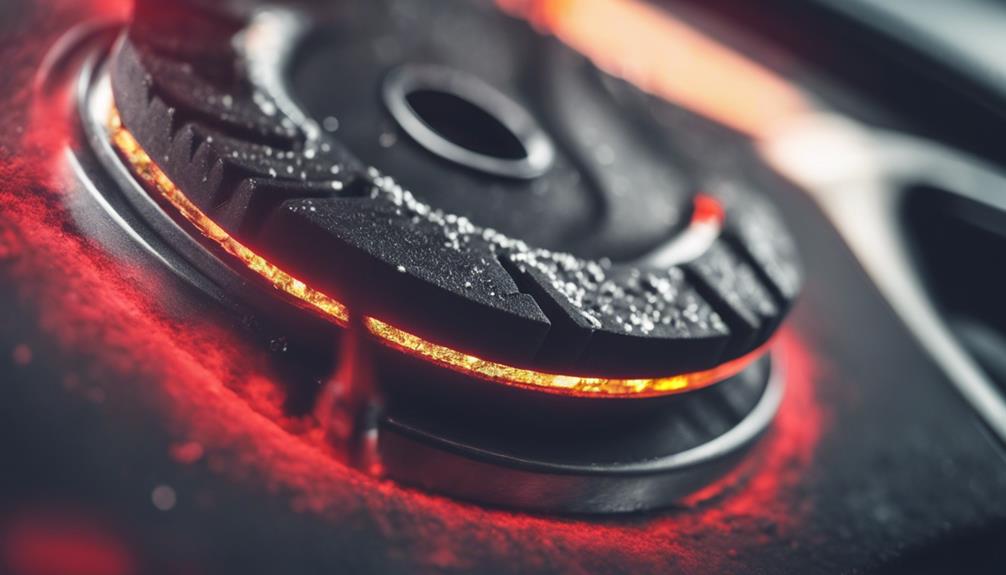
When conducting a thorough assessment of your brake system, paying attention to auditory cues can provide valuable insights into the wear of your brake pads. Here are some key auditory signs to look out for when checking the condition of your brake pads:
- Squealing Noise: If you hear a high-pitched squeal when applying the brakes, it's a common indicator that your brake pads have worn down and need replacement.
- Clicking Sounds: Clicking noises when you press or release the brake pedal might signal loose brake pads that require attention.
- Screeching or Grinding Noises: Unusual sounds like screeching or grinding during braking are strong indicators that your brake pads are due for a replacement.
- Squeaking or Grinding: Any abnormal sounds while braking, such as squeaking or grinding, shouldn't be ignored as they often point to worn brake pads that need immediate attention.
Sensory Feedback From Brake Pedal
Sufficiently firm pedal feedback while braking serves as a critical indicator of the overall condition and performance of your brake system. When pressing on the brake pedal, you should feel a consistent resistance that corresponds to the pressure applied. Changes in the pedal feel, such as a spongy or soft sensation, can be a sign of worn brake pads. This feedback is essential for your safety on the road as it provides real-time information about the braking system's functionality.
Various factors can influence the sensory feedback from the brake pedal, including the brake pad material and pedal modulation. Different brake pad materials can affect the pedal feel, with some providing a more immediate response than others. Proper pedal modulation, the ability to control and adjust the braking force smoothly, is crucial for safe and efficient braking. Paying attention to the feedback from your brake pedal can help you detect issues with the brake pads early on and ensure optimal braking performance.
Effects of Driving With Worn Pads
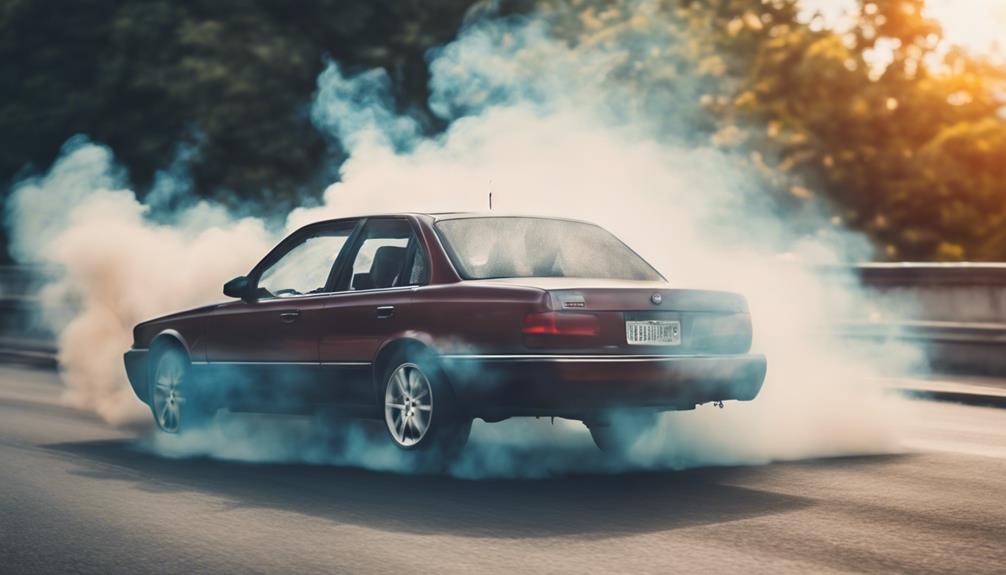
Driving with worn brake pads significantly impacts your vehicle's performance and safety on the road, necessitating immediate attention to prevent further complications. Here are some crucial effects of driving with worn brake pads:
- Safety risks: Increased stopping distances can jeopardize your safety and that of others on the road.
- Maintenance costs: Continued use of worn brake pads can lead to damage to the rotors and calipers, resulting in costly repairs.
- Legal implications: In some states, driving with excessively worn brake pads may lead to failed safety inspections and legal consequences.
- Emergency situations: Long-term use of worn brake pads poses a significant safety hazard as the braking system may fail unexpectedly, especially in emergency situations.
Ignoring the signs of worn brake pads not only compromises your safety but also increases the risk of expensive repairs and legal issues. It's essential to address worn brake pads promptly to ensure your vehicle's braking system functions reliably and keeps you safe on the road.
Frequently Asked Questions
How Do I Know if My Brake Pads Are Worn Out?
To know if your brake pads are worn out, pay attention to brake performance. Check for signs like grooves on the rotor, pulsation in the brake pedal, or squealing sounds. Visual inspection is crucial for spotting worn brake pads.
How Do You Know When Brake Pads Need Replacing?
When your ride's safety depends on it, you've got to gauge brake pad thickness like a pro. Listen for those squeals, feel for any grinding—it's all about knowing when to swap those pads.
What Happens When Brake Pads Are Too Worn?
When brake pads are too worn, your vehicle's stopping ability diminishes, risking safety. Immediate replacement is crucial to prevent extended stopping distances, grinding noises, and poor handling. Don't overlook worn brake pads; prioritize your safety.
How Do You Tell if You Need New Rotors or Just Brake Pads?
When determining if you need new rotors or just brake pads, remember that rotor condition directly impacts braking performance. Listen for unusual noises and feel for vibrations. Addressing both components ensures a smoother and safer ride.
Conclusion
So, next time you hear that screeching sound or feel a vibration in your brake pedal, don't ignore it. Just like a well-maintained engine is the heart of a car, properly functioning brakes are its lifeline.
Remember, neglecting worn brake pads can lead to disastrous consequences on the road. Stay vigilant, stay safe, and ensure your brakes are in top condition to keep you and your loved ones protected.

